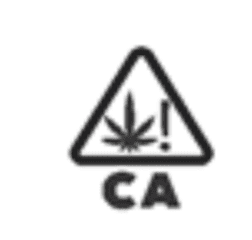
California is just starting to get its cannabis packaging and labeling regulations right under MAUCRSA. California has a mandated transition period from January 1 to July 1, 2018, during which time adult use and medical marijuana licensees can do business with each other and temporary and annual state licensees can transport and sell cannabis products already in their possession in the newly regulated market. This means there are two packaging and labeling standards during this transition period: one for products that licensees bring into the marketplace from before January 1, 2018 and another for products cultivated or made on or after January 1, 2018.
Transition Period Products: Cannabis Packaging and Labeling
For transition period products only, the following packaging and labeling rules apply:
Retailers and Distributors:
If at the time it is licensed by the state (i.e., receiving the temporary or annual license), a retailer already has cannabis goods not in child-resistant packaging, those products can still be sold by the retailer if the retailer places them “into child-resistant packaging . . . at the time of sale.” Cannabis goods that do not meet the full-blown packaging and labeling requirements for new products can still be transported and sold if “a sticker with the applicable warning statement under Business and Professions Code section 26120, subdivisions (c)(1)(A) and (c)(1)(B) is affixed to the cannabis goods prior to sale by the retailer.” Retailers can still sell, and distributors can still transport, cannabis goods that have not undergone laboratory testing “if a label stating that the cannabis goods have not been tested as required under Business and Professions Code section 26070(l) is affixed to each package containing the cannabis goods prior to sale by the retailer.” In addition, dried flower held in inventory by a retailer at the time of licensure that is not packaged may (not must) be packaged by the retailer into individual packages for sale. Cannabis products held in inventory by a retailer that don’t meet the appearance or ingredient requirements pursuant to Business and Professions Code section 26130 and 26131 can still be sold by a retailer.
Manufacturers:
In the transition period, manufacturers can sell cannabis products already in their possession at the time of licensure so long as those products are: 1) packaged in child-resistant packaging; 2) labeled with the government warning set forth at Section 40408(a)(3) of the manufacturing rules; 3) within the THC limits under Sections 40305 or 40306 of the manufacturing rules; and 4) labeled with the amount of THC and, if applicable, CBD per serving and per package.
Under the manufacturing rules, “child-resistant packaging” means:
“the package shall be designed or constructed to be significantly difficult for children under five years of age to open or otherwise obtain access to the product contained therein within a reasonable time, and shall not be difficult for normal adults to open or obtain access to the product contained therein.’ A package shall be deemed child-resistant if it satisfies the standard for “special packaging” as set forth in the Poison Prevention Packaging Act of 1970 Regulations (16 C.F.R. §1700.1(b)(4)”).
A secondary package that is child-resistant is okay with the state for this requirement.
Cultivators:
Other than having to label cannabis with the disclaimer that “This product has not been tested as required by the Medicinal and Adult-Use Cannabis Regulation and Safety Act” and having to include the government warning from Business and Professions Code section 26120, subdivisions (c)(1)(A), there are no other specific packaging or labeling requirements in the MAUCRSA emergency rules for transition period product in the possession of cultivators at the time of licensure (i.e., raw flower and unmanufactured cannabis products).
Once licensees run out of transition period product or start making or cultivating new products, the more robust packaging and labeling requirements apply to manufacturers, cultivators, and distributors. (Retailers will NOT be allowed to package and label any of the new products). However, it’s never to early to start running your mock-up labels and packaging to ensure that you comply with these very important regulations. Indeed, a proper label can make or break you in a products liability lawsuit and if you haven’t heard of Prop. 65 in the cannabis context, you’re behind (yes, transition period product should have the requisite Prop. 65 warnings).
California Cannabis Packaging and Labeling for “New” Products
California is just starting to get its cannabis packaging and labeling regulations right under MAUCRSA. The state has a mandated transition period from January 1 to July 1, 2018, during which time adult use and medical marijuana licensees can do business with each other, and temporary and annual state licensees can transport and sell cannabis products already in their possession in the newly regulated market. This means there are two packaging and labeling standards during this transition period: one for products that licensees bring into the marketplace from before January 1, 2018 and another for products cultivated or made on or after January 1, 2018. I covered transition period product packaging and labeling in a previous post. This post will cover the packaging and labeling requirements for those products made or cultivated on or after January 1, 2018 (collectively, “New Products”).
Retailers
For New Products, retailers won’t package or label anything. Instead, all New Products will come to retailers already packaged and labeled by either cultivators, processors, manufacturers, or distributors. The only packaging requirement retailers have for New Products is exit packaging. Specifically, per section 5413 of the Bureau of Cannabis Control Emergency MAUCRSA rules, “[c]annabis goods purchased by a customer shall not leave the retailer’s premises unless the goods are placed in an opaque exit package.”
Distributors
While distributors have lost a lot of power via MAUCRSA, they may still package, label, re-package, and re-label flower for retail sale (in line with cultivation packaging and labeling rules). That said, they cannot package, label, re-package, and re-label manufactured products unless they also own a manufacturing license and they’re dealing with their own manufactured products. The lone exception for manufactured products is if lab testing shows that the tetrahydrocannabinol (THC) content, per package or serving, was labeled incorrectly but is still within allowable THC limits. In that case, the distributor may then re-label the package with the correct amount of THC. Lastly, “transport only” distributors can’t package, label, re-package, or re-label any cannabis goods at all.
Manufacturers
For manufactured New Products, manufacturers (and Type Ps that label, package, re-label, and re-package cannabis products) must ensure that the label is in English and that all required labeling is “unobstructed and conspicuous” so that it can be “read by the consumer”. Moreover, all required labeling must go on the outside of the package or container (supplemental product information and “side effects” information can go on the inside of the packaging through inserts). There are two mandatory panel labeling requirements for manufactured New Products: the primary label and the informational label.
The primary label must contain the following items, in no less than 6-point font and in relation to the size of the primary panel and container/package:
- the identity of the product in a text size reasonably related to the most prominent printed matter on the panel;
- the net weight or volume of the contents of the package; and
- the THC content and cannabidiol (CBD) content for the package in its entirety (even if the CBD content is zero), expressed in milligrams per package.
If the manufactured New Product is an edible, the following requirements also apply:
- the words “cannabis-infused” must go immediately above the identity of the product in bold type and a text size larger than the text size used for the identity of the product; and
- the THC content and CBD content per serving, expressed in milligrams per serving; and
- this crazy symbol must be included:
You can include additional product information on the primary panel, but the foregoing MUST be on the outside label as relevant.
The informational label must also contain (in no less than a 6-point font in relation to the size of the primary panel and container/package, with limited exceptions depending on how much room you have with the label):
- the licensed manufacturer and its contact number or website address;
- the date of the cannabis product’s manufacture;
- the following statement: “GOVERNMENT WARNING: THIS PRODUCT CONTAINS CANNABIS, A SCHEDULE I CONTROLLED SUBSTANCE. KEEP OUT OF REACH OF CHILDREN AND ANIMALS. CANNABIS PRODUCTS MAY ONLY BE POSSESSED OR CONSUMED BY PERSONS 21 YEARS OF AGE OR OLDER UNLESS THE PERSON IS A QUALIFIED PATIENT. THE INTOXICATING EFFECTS OF CANNABIS PRODUCTS MAY BE DELAYED UP TO TWO HOURS. CANNABIS USE WHILE PREGNANT OR BREASTFEEDING MAY BE HARMFUL. CONSUMPTION OF CANNABIS PRODUCTS IMPAIRS YOUR ABILITY TO DRIVE AND OPERATE MACHINERY. PLEASE USE EXTREME CAUTION;
- if the product is intended for the medical market, the statement “For Medicinal Use Only”;
- a list of all product ingredients in descending order of predominance by weight or volume;
- if an edible product that contains an ingredient, flavoring, coloring, or an incidental additive that bears or contains a major food allergen, the word “contains,” followed by a list of the applicable major food allergens;
- if an edible product, the names of any artificial food colorings contained in the product and the amount, in grams, of sodium, sugar, carbohydrates, and total fat per serving; Instructions for use, such as the method of consumption or application, and any preparation necessary prior to use (which is completely up to the manufacturer); and
- the product expiration date, “use by” date, or “best by” date, if any; and, when available from the state, the UID and, if used, the batch number.
For the required packaging of all manufactured New Products, manufacturers must have packaging that is:
- capable of protecting the product from contamination and that shall not expose the product to any toxic or harmful substance;
- tamper-evident, which means that the product shall be packaged in packaging that is sealed so that the contents cannot be opened without obvious destruction of the seal;
- child-resistant, which means the package shall be designed or constructed to be significantly difficult for children under five years of age to open or otherwise obtain access to the product contained therein within a reasonable time, and shall not be difficult for normal adults to open or obtain access to the product contained therein;
- not imitating any package used for products typically marketed to children;
- if an edible New Product, opaque; and
- if the package contains more than one serving of cannabis product, re-sealable so that child-resistance is maintained throughout the life of the package.
Cultivators and Processors
Cultivators can grow and process their own flower. Processors only trim, dry, cure, grade, package, and/or label flower or non-manufactured cannabis: they don’t grow anything. Both are charged with the following packaging and labeling requirements for cultivated New Products headed for retail sale (including the same font, conspicuous placement, and English language requirements as manufacturers):
- all cannabis has to be labeled and placed in a resealable, tamper-evident, child-resistant package and must include, once available, a unique identifier for the purposes of identifying and tracking cannabis and cannabis products;
- the following statement in bold print: “GOVERNMENT WARNING: THIS PACKAGE CONTAINS CANNABIS, A SCHEDULE I CONTROLLED SUBSTANCE. KEEP OUT OF REACH OF CHILDREN AND ANIMALS. CANNABIS MAY ONLY BE POSSESSED OR CONSUMED BY PERSONS 21 YEARS OF AGE OR OLDER UNLESS THE PERSON IS A QUALIFIED PATIENT. CANNABIS USE WHILE PREGNANT OR BREASTFEEDING MAY BE HARMFUL. CONSUMPTION OF CANNABIS IMPAIRS YOUR ABILITY TO DRIVE AND OPERATE MACHINERY. PLEASE USE EXTREME CAUTION.”;
- the net weight of cannabis in the package;
- identification of the source and date of cultivation, the type of cannabis, and the date of packaging;
- the appellation of origin, if any;
- list of pharmacologically active ingredients, including, but not limited to THC, CBD, and other cannabinoid content, the THC and other cannabinoid amount in milligrams per serving, servings per package, and the THC and other cannabinoid amount in milligrams for the package total; and
- information associated with the unique identifier issued by the state Department of Food and Agriculture.
Additionally, a flower label may specify the county of origin only if 100% of the cannabis or nonmanufactured cannabis product contained in the package was produced within the designated county, as defined by finite political boundaries. For more on cannabis appellations in California, see here.
Prop. 65
The Safe Drinking Water and Toxic Enforcement Act of 1986 (a/k/a Prop. 65), requires theOffice of Environmental Health Hazard Assessment (OEHHA) to publish a list of chemicals known to cause cancer, birth defects or other types of reproductive harm. The list now includes more than 850 chemicals. Given this fact, there is hardly a manufacturing business in California that won’t find itself subject to Prop 65 warning requirements at some point.
Prop. 65 requires businesses to provide their customers with notice of these chemicals when present in the products they purchase, in their homes or workplaces, or that are released into the environment. The ultimate intent is to allow consumers to make informed decisions with respect to chemical exposure (though there have been allegations of abusive lawsuits against businesses by “bounty hunters” almost from the outset of the passage of Prop. 65).
Effective June 19, 2009, marijuana smoke was added to the Prop. 65 list of chemicals known to cause cancer. The Carcinogen Identification Committee of the Office of Environmental Health Hazard Assessment “determined that marijuana smoke was clearly shown, through scientifically valid testing according to generally accepted principles, to cause cancer.” And back in 2015, a “citizen enforcer” served the first five 60-day notices on medical cannabis dispensaries around the state.
As MAUCRSA licensing and regulation steadily comes online, you can bet that we will see a smattering of Prop. 65 attacks on cannabis business owners who fail to properly label their products. So, what do you need to look out for as a cannabis business? The first thing is to realize that, yes, Prop. 65 likely applies to you where any of the products you’re selling may contain Prop. 65 chemicals above safe harbor levels that warrant the mandated labeling warnings: Prop. 65 applies to everyone in the chain of distribution, not just retailers. Also, just because your products do not contain “marijuana smoke” doesn’t mean you don’t have to adjust your label: If your products contain any of the other ~849 chemicals, you have to disclose accordingly under Prop. 65. For example, any carcinogens or toxins that go into any oil inserted into a vapor pen cartridge are likely going to warrant a Prop. 65 warning.
There have also been updates to Prop. 65, the latest of which passed in 2016 and will be fully effective on August 30, 2018 of this year. These updates to the law affect how you must label your products to secure the safe harbor. The typical warning that’s out there right now in the cannabis community is some iteration of:
WARNING: This product contains a chemical known to the State of California to cause cancer.
With the new laws coming into play on August 30, the foregoing will no longer be good enough. Instead, unless you meet one of the few exceptions (one of which is that your product was manufactured prior to August 30, 2018 and contains the September 2008 safe harbor warnings), you’ll need to follow the new regulations. One of the most important changes with the new regulations is that you now need to actually identify at least one triggering chemical depending on the type of harm caused by that chemical. Specifically, OEHHA mandates that:
If, for example, there are five possible chemical exposures from a given product, and all five chemicals are listed only as carcinogens, then the business would only be required to name one of those five chemicals in the warning. . . If there are exposures to both carcinogens and reproductive toxicants, a business would be required to name one of the chemicals that is a carcinogen and one of the chemicals that is a reproductive toxicant, but the business could choose to identify more chemicals in the warning.
In turn, your new Prop. 65 warning labels will look like one of the following:
For carcinogens: “This product can expose you to chemicals including [name of one or more chemicals], which is [are] known to the State of California to cause cancer. For more information go to www.P65Warnings.ca.gov.”
For reproductive toxicants: “This product can expose you to chemicals including [name of one or more chemicals], which is [are] known to the State of California to cause birth defects or other reproductive harm. For more information go to www.P65Warnings.ca.gov.”
“A symbol consisting of a black exclamation point in a yellow equilateral triangle with a bold black outline. Where the sign, label or shelf tag for the product is not printed using the color yellow, the symbol may be printed in black and white. The symbol shall be placed to the left of the text of the warning, in a size no smaller than the height of the word ‘WARNING'”.
You can download the symbol here.
There are a slew of other mandates under Prop. 65, but the bottom line is that if you fail to comply with this law, you’re going to be facing costly legal challenges and/or settlements, none of which will have to do with your MAUCRSA compliance. So double check your labels now to ensure that you’re prepared and in compliance for August 30, 2018.
























